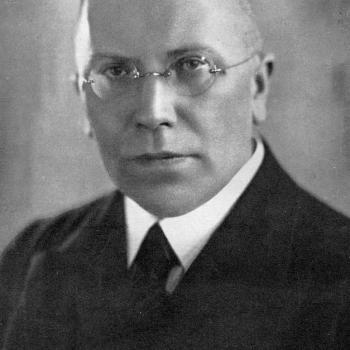So, what was happening in ancient Rome? Homosexuality was just as widespread among the Romans as it was among the Greeks (a sign of which is that it was condoned even by the stolid Stoics). The Romans had adopted the pederasty of the Greeks (aimed, generally, at boys between the ages of 12 to 18). There was nothing shameful about such sexual relations among Romans, if the boy was not freeborn. Slaves, both male and female, were considered property, and that included sexual property.
But the Romans also extended homosexuality to adult men, even adult free men. And it is likely that this crossing of the line from child to adult, unfree to free—not homosexuality as such—was what affronted the more austere of the Roman moralists.
And so we hear from Tacitus (56-117 AD), the great Roman historian, of the shameful sexual exploits of a string of Roman emperors from Tiberius to Nero. Nero was the first imperial persecutor of the Christians. His tutor and then advisor was the great Stoic moralist Seneca himself. Unfortunately, Seneca’s lessons must have bounced right off the future emperor. When he took the imperial seat, complete with its aura of self-proclaimed divinity, no trace of Stoic austerity remained.
In Nero, Tacitus tells the reader, tyrannical passion, the hubris of proclaimed divinity, the corruption of power, and “every filthy depraved act, licit or illicit” seemed to reach an imperial peak. He not only had a passion for “free-born boys” but also for quite literally marrying other men and even a boy, sometimes playing the part of the woman in the union and sometimes the man.
As Tacitus relates one incident (Grant’s translation): “Nero was already corrupted by every lust, natural and unnatural. But he now refuted any surmises that no further degradation was possible for him. For…he went through a formal wedding ceremony with one of the perverted gang called Pythagoras. The emperor, in the presence of witnesses, put on the bridal veil. Dowry, marriage bed, wedding torches, all were there. Indeed everything was public which even in a natural union is veiled by night.”
Such was only one instance. We also have from historian Seutonius, a contemporary of Tacitus, a report of Nero’s marriage to Doryphorus (who was himself married to another man, Sporus).
Martial, the first-century A.D. Roman poet, reports incidences of male-male marriage as kinds of perversions, but not uncommon perversions, speaking in one epigram (I.24) of a man who “played the bride yesterday.” In another (12.42) he says mockingly, “Bearded Callistratus gave himself in marriage to…Afer, in the manner in which a virgin usually gives herself in marriage to a male. The torches shone in front, the bridal veils covered his face, and wedding toasts were not absent, either. A dowry was also named. Does that not seem enough yet for you, Rome? Are you waiting for him to give birth?”
In Juvenal’s Second Satire (117), we hear of one Gracchus, “arraying himself in the flounces and train and veil of a bride,” now a “new-made bride reclining on the bosom of her husband.” Such seems to have been the usual way of male-male nuptials among the Romans, one of t he men actually dressing up as a woman and playing the part of a woman.
The notoriously debauched emperor Elagabalus (ruled 218-222) married and then divorced five women. But he considered his male chariot driver to be his “husband,” and he also married one Zoticus, an athlete. Elagabalus loved to dress up as a queen, quite literally.
[Keep reading. . .]















